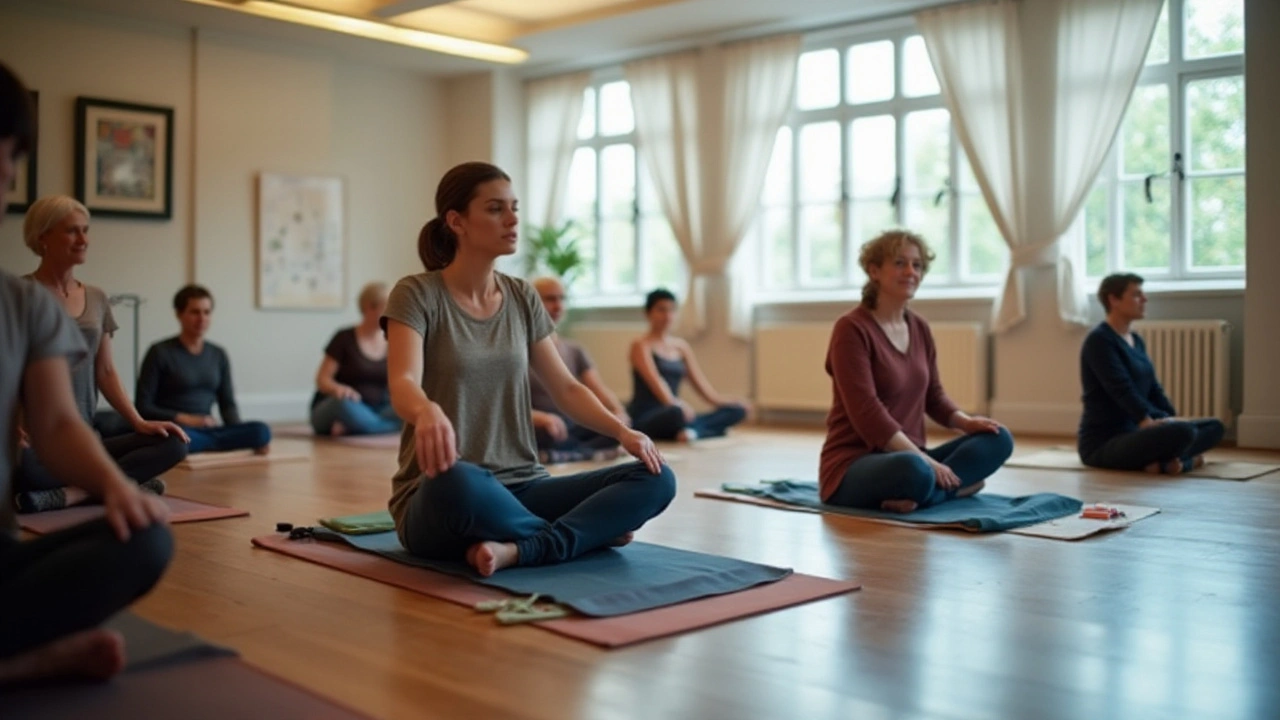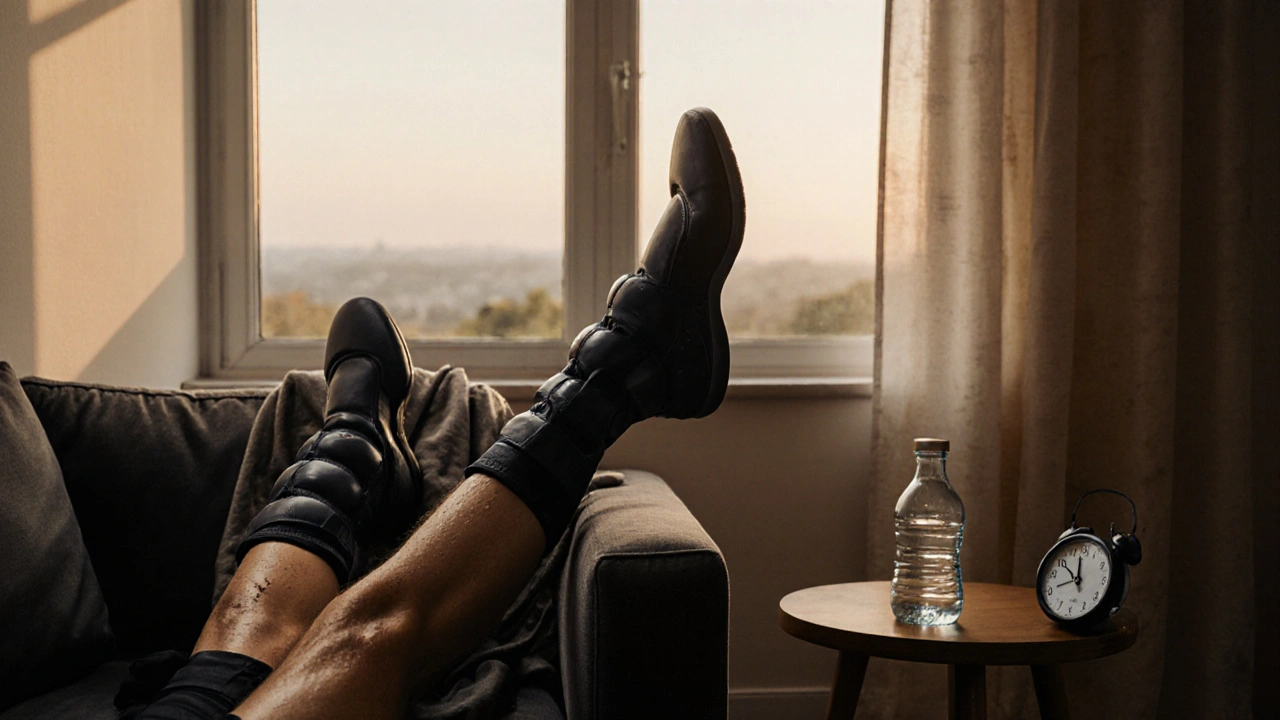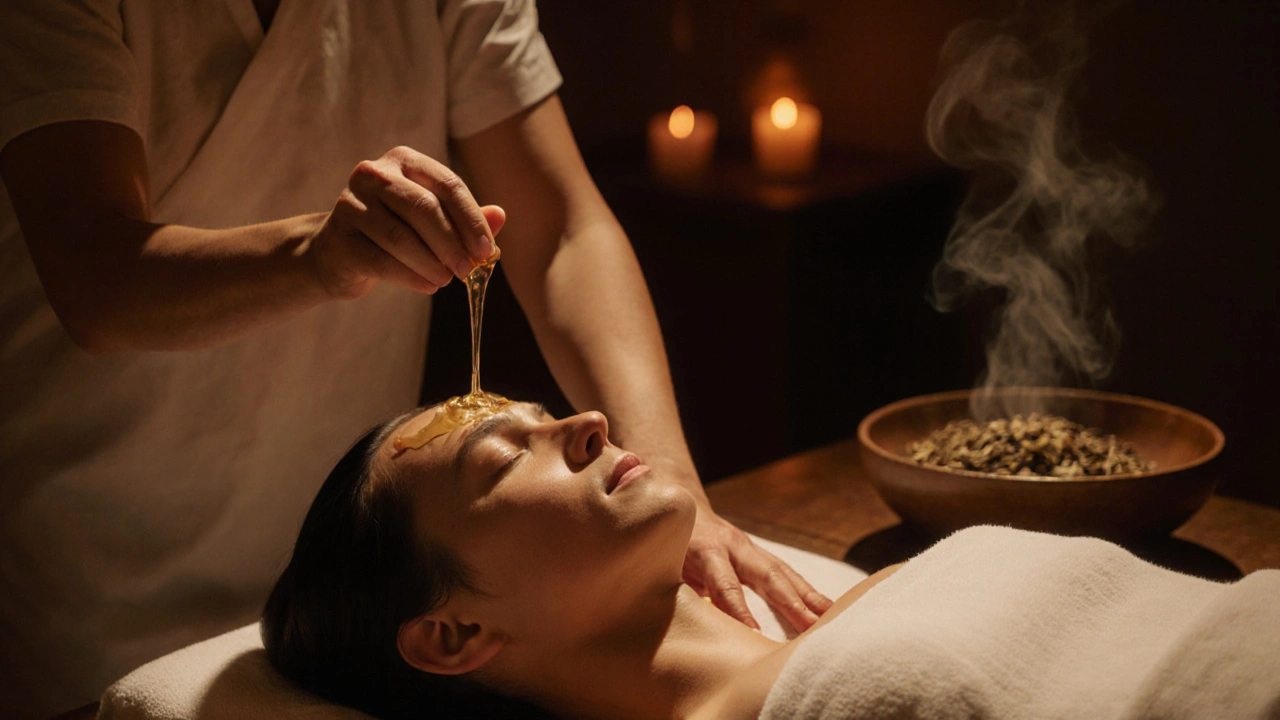Unlocking the Secrets of Effective Feldenkrais Training

Many people spend their lives battling discomfort and strained movements, not realizing there might be a simple and natural solution to their woes. Feldenkrais Training drops into this realm as a refreshing alternative, whispering promises of newfound bodily freedoms. It's more than just a practice; it's a gentle reconnection with how our bodies naturally move.
This article navigates the fascinating world of Feldenkrais, giving you insight into how this method can transform the way you live. Whether you're an athlete aiming for peak performance or someone just looking for ease in daily activities, there's something in Feldenkrais for everyone. Join us as we explore the principles and benefits of this transformative technique.
- Understanding Feldenkrais Training
- The Origins and Philosophy
- How Feldenkrais Techniques Work
- The Benefits for Body and Mind
- Real-Life Success Stories
- Incorporating Feldenkrais into Daily Life
Understanding Feldenkrais Training
Feldenkrais Training is more than just a series of exercises—it's a sophisticated and systematic way to enhance body awareness and self-use. Rooted in the belief that healthy movement should be easy and pain-free, this training system is based on the intricate relationship between mind and body. The method was developed by Moshe Feldenkrais, a distinguished physicist and engineer, who became interested in the body's potential to heal itself after struggling with a knee injury. His keen fascination with physics and martial arts informed his understanding of biomechanics and functional movement.
At the core of Feldenkrais Training lies the principle that the body learns through experience and that incorrect patterns of movement can be unlearned by exploring alternative ways of using the body. This exploratory approach is called 'Awareness Through Movement' (ATM). These lessons are typically conducted in a group setting, where a teacher verbally guides students through various movements, encouraging them to notice subtle differences in how they experience each motion. The intention is to increase the individual's awareness of their habitual ways of moving and introduce possibilities for more efficient, less stressful movement.
Another crucial aspect of the training is the one-on-one sessions known as 'Functional Integration' (FI). Here, practitioners use gentle touch and movement to guide clients in discovering new possibilities of movement and improved coordination. This hands-on approach is personalized, with the practitioner adapting lessons to meet the individual's needs. A notable fact is that some individuals have reported dramatic improvements in their physical capabilities after only a few FI sessions—an indication of the body's resilience and capacity for change.
"The aim is a body that is organized to move with minimum effort and maximum efficiency, not through muscular strength, but increased consciousness of how it works." — Moshe Feldenkrais
With regular practice, students of Feldenkrais Training often experience benefits that transcend the physical. Many find improvements not just in posture or pain management, but also in mental clarity and stress reduction. As the modern world places increasingly diverse demands on our bodies, the relevance of this training becomes evident. In fact, a survey of practitioners highlighted improvements in range of motion and reduced chronic pain as the most commonly reported benefits. Moreover, it fosters a greater sense of self-awareness and mindfulness, assisting individuals in moving gracefully through the complexities of daily life.
From professional dancers and athletes seeking to fine-tune their movements, to those simply yearning for greater ease in everyday activities, Feldenkrais stands as a testament to the power of mindful exploration and self-discovery. This training helps one peel away the layers of habitual tension, opening up a world where movement is both liberating and joyful, ultimately contributing to enhanced overall well-being.
The Origins and Philosophy
The Feldenkrais Method has roots that trace back to the multifaceted life of its creator, Moshe Feldenkrais, a remarkable figure whose eclectic background underpins the method's development. Born in 1904 in modern-day Ukraine, Moshe Feldenkrais later moved to Palestine, where his passion for both soccer and self-defense grew, eventually leading him to the study and development of Judo. His professional journey as an engineer and physicist brought him into close contact with luminaries such as Joliot-Curie, an experience that significantly influenced his approach to understanding the body and its movements.
Feldenkrais's work is anchored on the profound principle of neuroplasticity, which posits that the brain is remarkably adaptable and capable of forming new neural pathways. He believed that through gentle and mindful movement, one could influence and reprogram these pathways, allowing individuals to overcome habitual restrictions and find new freedom in movement. "What I am after is more flexible minds, not just more flexible bodies," said Feldenkrais, succinctly encapsulating the philosophy that drives the method. Movement therapy emerged from this belief, providing a revolutionary lens through which to view both physical and mental wellness.
The Feldenkrais Method is distinct in its holistic approach, synthesizing elements of Eastern and Western traditions. Unlike conventional therapeutic practices that often compartmentalize the body, Feldenkrais saw the mind and body as intrinsically linked. By focusing on improving movement awareness, the method promotes a harmonious balance conducive to personal growth. This comprehensive approach has made Feldenkrais popular among performers, athletes, and those in rehabilitation, offering them non-invasive means to enhance bodily awareness and functionality.
Interestingly, the Method's effectiveness is reflected in a study published in the 'Journal of Physical Therapy Science', which revealed that individuals practicing Feldenkrais reported notable improvements in physical comfort and cognitive function. Its reliance on kinesthetic intelligence sets it apart, inviting users to delve into an experiential learning process. This is indicative of Feldenkrais's broader goal of inspiring a cultural shift towards viewing movement as an integral component of personal health and evolution. This approach underscores the significant influence of Feldenkrais on how we perceive and engage with body awareness techniques today.

How Feldenkrais Techniques Work
The essence of Feldenkrais Training lies in its focus on increasing body awareness through deliberate movements. These techniques are structured around the idea that flexible movement leads to a flexible mind. By utilizing slow, subtle motions, Feldenkrais encourages individuals to pay attention to the details of how their bodies move, thus discovering new and healthier patterns of motion. Through this process, the brain creates alternative pathways, which can alleviate chronic pain, improve posture, and boost physical performance.
The methodology employs two main practices: Awareness Through Movement (ATM) and Functional Integration (FI). During ATM, participants usually lie on mats and follow verbal instructions that guide them through a series of movements. The purpose is not to exert effort or reach a performance goal but to enhance self-awareness. Conversely, FI is a one-on-one session where a practitioner uses gentle touch to communicate how a person moves. This personalized approach allows for a deeper understanding and applying corrections in real-time.
Moshe Feldenkrais, the founder, believed that movement is intrinsically tied to the nervous system. He argued that habitual patterns can be identified and improved upon, ultimately loosening the constraints they place on us. As Feldenkrais himself put it,
"If you know what you are doing, you can do what you want."This strategy has countless advocates across the globe who report improved mobility, reduced stress, and enhanced emotional wellbeing.
Comprehensive studies indicate that Feldenkrais not only improves physical aspects but also enhances mental faculties, such as cognitive function and memory. A study published in the Journal of Aging and Physical Activity showed that participants who engaged in Feldenkrais sessions experienced significant improvements in balance and functional movement. This is especially relevant for aging populations seeking a non-invasive way to improve their quality of life.
The Feldenkrais method stands apart due to its unique approach to movement therapy, offering a treasure trove of benefits applicable to diverse populations. By eschewing conventional exercise paradigms, it provides an intriguing alternative that focuses on the harmonious blend of sensory-motor learning. Such practice not only enhances agility and coordination but also fosters an introspective journey leading to self-discovery and personal growth.
Adopting Feldenkrais into one's routine requires patience and dedication but promises astonishing rewards. Famous dancers and athletes, like Yehudi Menuhin and Peter Brook, have adopted the method to supplement their endeavors. With its gentle approach and profound effect on both body and mind, delving into Feldenkrais might just be the secret to unlocking potentials you didn't know existed.
| Aspect | Benefits |
|---|---|
| Posture | Improved alignment and balance |
| Stress | Reduced tension and anxiety |
| Mindfulness | Increased mental clarity and focus |
The Benefits for Body and Mind
Diving into the realm of Feldenkrais is like opening a window to endless possibilities for personal enhancement on both physical and mental levels. Often, people experience an epiphany as they start to integrate this method into their routines. The benefits go beyond simple muscle relaxation. They permeate every aspect of life, providing insight into how the body and mind can harmonize for better living. Feldenkrais emphasizes learning through gentle motion, which in turn educates the central nervous system. This allows one to move more efficiently and comfortably, even if they've struggled with movement issues for years. The method encourages a rich interplay between mind and body, delivering improvements in balance, flexibility, and coordination.
Imagine a life with fewer aches, a life where movement flows as it should, uneventful yet exceptional in simplicity. The biological advantage of understanding one's habitual patterns means that through movement therapy, people gain not only physical benefits but enhancements in mental clarity too. Breaking away from repetitive strain patterns alleviates stress and opens up room for mindfulness. It's not uncommon for practitioners to report a clearer, calmer mind after sessions. Indeed, you might recall the words of Dr. Norman Doidge, renowned for his work on neuroplasticity:
"The body will improve if it receives better information and is given the chance to relearn its movements."This reflects the profound impact of Feldenkrais on our cognitive processes.
A statistical review on movement-based therapies shows that individuals who participate in regular Feldenkrais sessions report a significant improvement in their overall quality of life. In one study, participants with chronic pain conditions noted a reduction in pain intensity and a remarkable improvement in their mood, arguably stemming from the enhanced awareness and relaxation achieved through this training. Now, weigh that against a scale where conventional methods might only target superficial symptoms, and the efficacy of such a profound and deeply introspective approach becomes unmistakable. A deeper awareness of movement helps in reframing how we interact with our environment, offering a higher level of autonomy and self-trust, especially valuable for those recovering from injuries or coping with chronic ailments.
Perhaps one of the notable, yet often understated advantages of body awareness through Feldenkrais lies in its versatility. Not only does it serve as a tool for rehabilitation, but it becomes a companion for those striving for peak performance. Elite athletes often complement their demanding regimens with these methods to fine-tune their body mechanics and ward off injury. By heightening sensory and kinesthetic awareness, Feldenkrais supports them in achieving optimal precision in their discipline. Much like ballet dancers who must make split-second decisions about posture and tension, athletes who are attuned to their bodies invariably perform better. It's no surprise that many coaches incorporate these sessions into training programs, stating that the method holistically complements their sports-specific training.

Real-Life Success Stories
Often, the best way to understand the power of Feldenkrais is through the transformative tales of those who've felt its impact. One compelling story comes from Mary Thompson, a professional dancer whose career was nearly halted by a debilitating back injury. Doctors advised a more invasive route, yet Mary chose to explore alternatives. She stumbled upon Feldenkrais and embarked on a journey that not only saved her career but also transformed her understanding of movement. Through the gentle yet profound strategies of movement therapy, Mary was able to regain her fluidity, enhancing not only her dance but her daily life. Today, she credits Feldenkrais for unlocking her body's hidden potential, a sentiment echoed by many in similar situations.
In another instance, Max Johnson, a retired schoolteacher, found himself battling arthritis, making mundane tasks a painful ordeal. Skeptical at first, Max attended a Feldenkrais class on a friend's recommendation. With consistent practice, Max discovered a renewed sense of mobility, a freedom that seemed elusive before. Each session gradually unfurled a new layer of body awareness, slowly eroding the shackles of pain. His story underscores the holistic benefits of Feldenkrais, highlighting its impact not only on the physical but also on mental resilience. "Feldenkrais was a revelation," Max often shares, "it's like learning to listen to a softer, unspoken language of the body."
For those dealing with neurological issues, Feldenkrais offers a beacon of hope. Jill Patterson, diagnosed with Multiple Sclerosis, sought various therapies to manage her condition. It was Feldenkrais that offered a unique approach, targeting the nervous system's capacity to relearn. Through specific training techniques, she experienced noticeable improvements in balance and coordination, providing her with tools to navigate her world more confidently. She often describes the therapy as an unending journey of discovery—each session a step towards better understanding her body's capabilities despite its challenges.
The transformative power of Feldenkrais is also evident in the story of Tom Rivera, a veteran dealing with post-traumatic stress disorder. The practice of gentle body awareness provided Tom with a safe space to rediscover calmness and safety within his own skin. He emphasizes the meditative aspect of Feldenkrais, crediting it with not only easing his mental turmoil but also fostering a deeper sense of self-trust. Feldenkrais brought stillness to his initially chaotic world, highlighting its potential to mend not just the physical self but also the emotional.
For enthusiasts regardless of physical condition, incorporating Feldenkrais techniques has provided a surprising enhancement in quality of life. An informal survey among regular practitioners revealed consistent improvements in posture, ease of movement, and overall coordination. Statistics from the International Feldenkrais Federation underscore this, showcasing a remarkable increase in users' self-reported mobility and satisfaction.
The stories underscore a simple truth: Feldenkrais works not through miraculous intervention but through the nuanced art of understanding one's body. These are tales of rediscovery, of individuals who learned to partner with their own movements to regain control over their lives. These narratives show that Feldenkrais is more than a practice; it's a lesson in listening to the body's quiet intelligence.
Incorporating Feldenkrais into Daily Life
Embracing Feldenkrais Training in our day-to-day life can transform mundane activities into moments of heightened awareness and improved movement. The key is to integrate its principles naturally into everyday routines. This transition isn’t about setting aside large chunks of time but rather weaving its techniques into the fabric of your life. Start by becoming more aware of your body as you perform simple tasks, such as walking or even brushing your teeth, and try adjusting your posture slightly to see how it affects your movements and comfort levels.
Practically speaking, when you're standing in line, rather than focusing on the wait, tune into how you distribute your weight between your feet. Is one foot bearing more weight? Adjust and observe how balancing evenly changes how you feel. Such subtle cues can serve as mini exercises, gently reinforcing the principles of movement therapy associated with Feldenkrais. You might find that cultivating these small moments of awareness leads to greater ease and less strain in the things you do every day. Moreover, for those who work at a desk, consider experimenting with different seating positions or standing arrangements, an excellent opportunity for implementing this mindful approach to body awareness.
Having the discipline to engage with Feldenkrais techniques regularly can pay significant dividends. Moshe Feldenkrais himself noted,
“We can improve our livelihood through an intelligent use of ourselves.”These words stand as a testament to the philosophy of gradual learning and improvement. It’s about exploring the intricacies of your physical being with curiosity and an open mind. Try dedicating a few minutes each day to lying on the floor and sensing how each part of your body feels in contact with the ground. This simple practice can help build a foundation for deeper understanding and improved movement.
To make the process more structured, consider setting up a daily routine or checklist of Feldenkrais exercises. Start your day with a short movement therapy session focusing on gentle stretches and leaning into awareness. Begin with one or two exercises in the morning, gradually expanding as you become more comfortable with the routines. Make it a habit that aligns with your schedule, rather than treating it as a chore. If you prefer a bit more guidance, numerous online resources and classes are available, many led by certified instructors who can help you fine-tune techniques and offer personalized tips.
The benefits of incorporating Feldenkrais into your daily routine are abundant. Enhanced body awareness not only helps improve physical coordination but also impacts mental clarity and reduces stress. As your body becomes less restricted, so too is your mind liberated to focus more effectively on other tasks. Research suggests that those who persist with the practice report improvement in energy levels, and many people even experience relief from chronic pains and discomforts. Consider creating a journal of progress, jotting down insights and milestones you reach through this method, which can act as an additional motivator as well as a personal record of your journey.
Lastly, it's helpful to connect with a community of like-minded individuals who are exploring Feldenkrais and benefit from shared experiences. Learning in communal settings, or even through virtual groups can provide additional perspectives and support. Look out for forums or social media groups dedicated to Feldenkrais practitioners, where you can seek advice, share successes, and even learn about events and workshops in your area. This sense of community can be a powerful tool in maintaining motivation and deepening your understanding of Feldenkrais methods.





